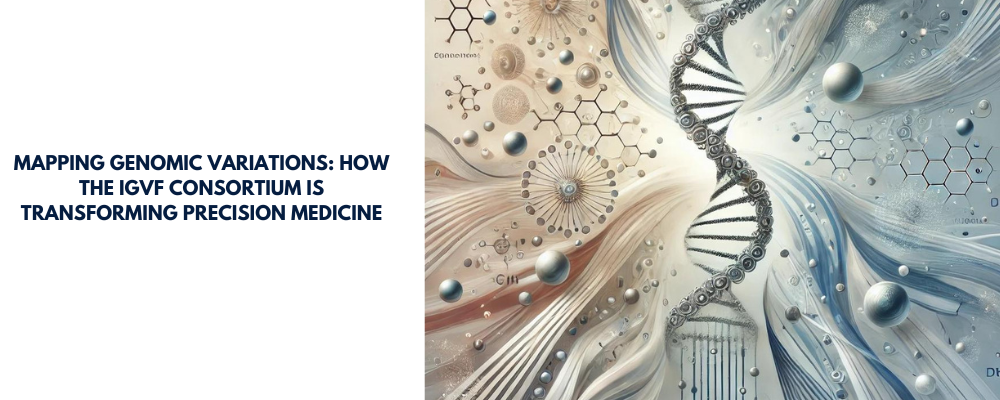Mapping Genomic Variations: How the IGVF Consortium is Transforming Precision Medicine

The article titled "Deciphering the Impact of Genomic Variation on Function" published by the IGVF Consortium in Nature (2024), explores how genomic variations influence biological processes, health, and disease. The consortium's ambitious goal is to map out the relationships between genomic variation and its functional impacts across diverse populations, cells, and biological contexts. The key to understanding genetic predispositions and disease mechanisms lies in systematically cataloging these variations and their effects on cellular and molecular functions.
The IGVF Consortium employs advanced techniques, including single-cell mapping, CRISPR-mediated genomic perturbations, and predictive modeling. These approaches are crucial in elucidating how both coding and noncoding variants affect gene expression, protein function, and molecular networks. By doing so, they hope to shed light on how such variants manifest in different phenotypes.
Why is this research important?
In the past two decades, genomic research has revealed an astonishing number of genetic variations through genome-wide association studies (GWAS) and population-scale biobanks. However, understanding how these variations translate into functional outcomes has remained elusive. For instance, the mechanisms that explain genetic risk for common diseases, such as diabetes or multiple sclerosis, are often unclear. Moreover, many variants are classified as "variants of uncertain significance" (VUS), leaving their clinical impact unresolved.
A Strategic Framework
The IGVF Consortium’s "map–perturb–predict" framework is a systematic approach that combines three main activities:
Mapping: Single-cell technologies like snATAC-seq and snRNA-seq are used to create high-resolution maps of gene regulation across hundreds of cell types. This helps pinpoint how genomic variations might disrupt regulatory elements and gene expression.
Perturbing: Experimental methods, such as CRISPR screens, introduce specific genomic changes to observe their effects. By perturbing the genome, researchers can directly link certain variants to functional changes in cellular behavior.
Predicting: Using machine learning models, the consortium aims to predict the impact of untested variants across different biological contexts. These predictive models can generalize variant effects to broader populations, making them valuable for identifying potential therapeutic targets.
A Broader Impact
The IGVF Consortium’s work is poised to impact precision medicine by informing genetic diagnoses and developing more effective therapies. One key area is the classification of VUS in genes related to diseases like cancer. For instance, BRCA1 variants have been notoriously difficult to interpret, but IGVF’s systematic approach could offer definitive insights into which variants are pathogenic.
Additionally, by applying this framework to diseases that disproportionately affect under-represented populations, the consortium is addressing a critical gap in genomic research, ensuring that the benefits of genomics are accessible to all.
Looking Forward
While the challenges of mapping genomic variation on such a large scale are immense, the consortium’s coordinated efforts promise to accelerate our understanding of human biology and disease. As the IGVF continues to expand its collaborative networks and datasets, it will undoubtedly catalyze groundbreaking research, paving the way for new genetic discoveries and more personalized healthcare solutions.
Reference:
IGVF Consortium. Deciphering the impact of genomic variation on function. Nature 633, 47–57 (2024).
